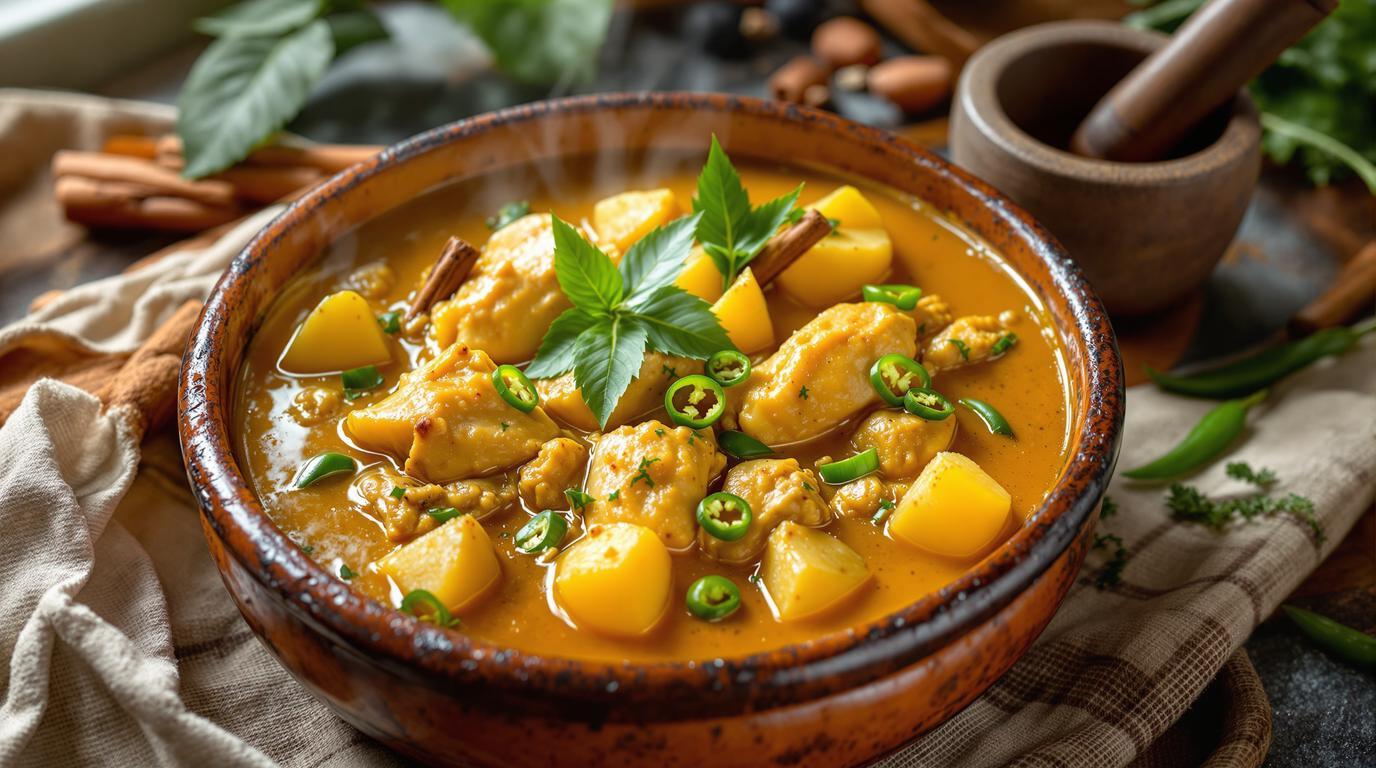There’s something deeply comforting about a truly authentic chicken curry that can transport you across continents with just one aromatic spoonful. Growing up, I’d watch my grandmother infuse her curries with what seemed like magic—precise movements, no measuring cups, just decades of intuition guiding her hands. Today, I’m sharing two grandmother-style chicken curry recipes that have stood the test of time: a rich Malaysian version with coconut cream, and a robust North Indian variation that showcases whole spices. Both represent culinary traditions passed down through generations, offering a taste of home no matter where you are in the world.
Grandma’s Malaysian Chicken Curry
My first encounter with authentic Malaysian curry came during my culinary travels through Southeast Asia. What struck me most was how the dish balanced complex flavor with incredible accessibility—something I’ve spent years trying to recreate in my own kitchen.
This recipe mirrors the one my colleague’s grandmother, Nancy, perfected during post-WWII Malaysia, where Indian and Chinese culinary influences melded into something uniquely magnificent. The secret lies in allowing the oil to separate from the curry paste—a step many home cooks unfortunately skip.
Chef’s Note: The marination isn’t just for flavor—it’s crucial for tenderizing the chicken and allowing the spices to penetrate deeply. If you’re short on time, even 30 minutes will make a difference, but overnight truly transforms the dish.
Essential Ingredients
- 2 lbs (900g) bone-in chicken pieces, skin-on preferred
- 4 cloves garlic, 1-inch (2.5cm) ginger, 2 medium onions—pounded into paste
- 2 tablespoons (30ml) vegetable oil
- 1 cinnamon stick, 10 curry leaves, 1 green chili (split lengthwise)
- 2 tablespoons Malaysian meat curry powder (substitute: Sri Lankan roasted curry powder)
- 1 teaspoon chicken stock powder
- 1 tablespoon tomato puree
- 2 medium potatoes, peeled and quartered
- 2 tablespoons (30ml) coconut cream
- Water as needed
The Magic Process
- Marinate the chicken: Combine half the aromatic paste with 1 tablespoon curry powder and coat the chicken pieces thoroughly. Refrigerate for 30 minutes minimum (or overnight for exceptional flavor).
- Build the foundation: Heat oil in a heavy-bottomed pot over medium heat. Fry the remaining aromatic paste until fragrant and the oil begins to separate (about 3-4 minutes). This is where patience creates magic.
- Layer the flavors: Add remaining curry powder and stir continuously for one minute until the raw spice smell disappears.
- Sear the protein: Add marinated chicken and brown lightly for 2-3 minutes, turning occasionally.
- Create the sauce: Add stock powder, tomato puree, and enough water to barely cover the chicken. Bring to a simmer, cover partially, and cook for 20 minutes.
- Introduce the potatoes: Add potato quarters, continuing to simmer for another 20 minutes until potatoes are tender and chicken falls easily from the bone.
- Finish with richness: Stir in coconut cream during the final 5 minutes of cooking. Garnish with fresh curry leaves and green chili.
North Indian Variation
For those preferring a less coconut-forward curry, the North Indian-Pakistani style chicken salan offers deep, complex flavors built on caramelized onions and whole spices. The fundamental difference is the tomato base and absence of coconut, creating a lighter yet equally satisfying curry.
Begin by deeply browning 2 sliced onions in ghee until golden, then add whole spices (cumin seeds, cloves, cinnamon, bay leaf) to bloom in the fat. The secret technique here is proper deglazing—scraping those flavorful browned bits with small amounts of water, creating incredible depth of flavor before adding your chicken.
Serving & Presentation Tips
Malaysian curry shines alongside homemade roti canai or steamed jasmine rice that can soak up the rich gravy. For the North Indian version, freshly made garlic naan or jeera (cumin) rice makes the perfect accompaniment. I like to serve either version with a bright, acidic counterpoint—a simple cucumber salad or yogurt raita with mint works beautifully.
For an unexpected but brilliant pairing, try serving your Malaysian curry with a cold Garden-Inspired Smoothie Bowl as a refreshing dessert, or complement your North Indian curry with a Rustic Apple Magic dessert.
These curries are exercises in patience and technique, but they’re infinitely forgiving. If you’re intrigued by slow-cooked, flavor-packed dishes, you might also enjoy my Hungarian Goulash or the vibrant Rustic Shakshuka.
Remember, authentic curry isn’t about precision as much as it is about process. Trust your senses—the aromas will guide you, the colors will inform you, and the occasional taste will confirm you’re on the right path. This is cooking as our grandmothers taught us: with heart, with patience, and with the understanding that feeding others is an act of love.
